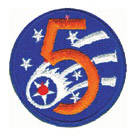Central Blue
Posts: 695
Joined: 8/20/2004
Status: offline

|
quote:
ORIGINAL: Buck Beach
quote:
ORIGINAL: Central Blue
I don't know how hard you are looking at the shore side stuff. Some interesting stuff here towards the bottom of the link describing military facilities in California.
http://www.militarymuseum.org/HistoryWWII.html
The naval section seems to have the most detail and separate articles -- almost a shoreside naval OOB really:
http://www.militarymuseum.org/NvPosts.html
Looks like it was taken from this source:
http://www.ibiblio.net/hyperwar//USN/ref/USN-Act/index.html Which I'll bet you guy have already found.
I think the East Bay (Alameda) is under-represented for Naval support, given what should be in that hex: Oakland Army Terminal, Point Molate, Port Chicago, Alameda NAS, and the Coast Guard base at then Government Island.
And the Bay Area should really have some refinery capacity: Shell at Martinez and Standard oil at Richmond. But also Tidewater-Associated at Avon and Amorco, and Union Oil at Oelum. All would be in the Alameda hex. All were supplied by pipeline from inland oil fields.
Anyway. I am really looking forward to this, even if it's just all of the extra vessels to keep track of.
I agree with the oil production for the area, but, I think that lies outside the mod in Andrew Brown's world.
As far as the Alameda base originally I thought the same, but, when the war broke out I don't think it had built up yet (same goes for Port Hueneme). They did have the USCG base that was home to the area's Cutters.
Point Molate opened at some point in 1941. Port Chicago/CNWS some time in 1942.
Per Oakland Army Terminal:
http://www.militarymuseum.org/OaklandArmyBase.html
1940. The San Francisco Port of Embarkation Board of Officers recommended expanding the Port of Embarkation at Fort Mason, California, and also recommended that waterfront areas in the partially developed Oakland Outer Harbor be acquired to meet expansion needs.
1941. In January, the first land was acquired following War Department approval of the expansion plan. Base operations started on a limited basis in February, using existing site
facilities. Landfill and building construction started in April. “Port and General Depot” was the initial designation of the installation. In December, the “Oakland Sub-Port of the San Francisco Port of Embarkation,” with headquarters at Fort Mason, was officially commissioned.
1942. The Administration Area was officially commissioned and designated as “Camp John T. Knight.”
1943. The Integrated Terminal Facility was completed at a cost of $35 million. All waterfront areas of the base, including the piers, wharves, and warehouses, received the name “Oakland Army Base,” effective January 1944.
Per Alameda: http://www.militarymuseum.org/NASAlameda.html
In 1934 the city of Alameda built an air strip called Benton Field on reclaimed land at the north end of the island. It was built for two reasons; for the immediate use of Pan American Airways, and as an incentive to attract the Navy to the community of Alameda. The Navy studied the site, accepted Alameda's offer, and in 1938 began building a large air station here that could support four aircraft carrier groups, five patrol squadrons, two utility squadrons, have facilities for complete plane and engine overhaul, piers to dock two aircraft carriers and several outlying air fields. The new naval station, named U.S. Naval Air Station, Alameda, became the Navy's "Aviation Gateway to the Pacific". Construction wasn't yet complete when the U.S. went to war in Dec. 1941, but the air station's personnel began performing wartime duties with what they had available. Offshore and inshore air patrols were begun, air cover for convoys was provided and the station became a ferry point for fleet air units going elsewhere.In late March 1942 the aircraft carrier "Hornet" arrived at NAS, Alameda and 16 Army B-25 bombers were hoisted aboard. The Hornet then departed under great secrecy on April 2. These were the planes of General Jimmy Doolittle's Raiders that bombed Tokyo and other cities in Japan on April 18, 1942.
During World War II, this was one of the Navy's busiest air stations with air units, carrier groups, supplies, numerous naval personnel and sometimes VIP's passing through on their way to the Pacific or to points east. Actually, construction never stopped at NAS, Alameda during the war and by 1945 it was a huge facility with 3600 officers and 29,000 enlisted personnel.
All of those facilities are in the hex labeled Alameda. So yeah, starts medium, but got really, really big. But maybe I should go beat this drum in another thread. 
_____________________________
USS St. Louis firing on Guam, July 1944. The Cardinals and Browns faced each other in the World Series that year 
|
 Printable Version
Printable Version






 I love it.
I love it.










 New Messages
New Messages No New Messages
No New Messages Hot Topic w/ New Messages
Hot Topic w/ New Messages Hot Topic w/o New Messages
Hot Topic w/o New Messages Locked w/ New Messages
Locked w/ New Messages Locked w/o New Messages
Locked w/o New Messages Post New Thread
Post New Thread